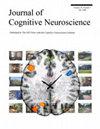真实的面部价值:猕猴下颞皮层对自然面部表情的处理。
IF 3.1
3区 医学
Q2 NEUROSCIENCES
引用次数: 0
摘要
对于灵长类动物来说,恐惧的表情被认为是强大的社会信号。在实验室环境中,带有恐惧表情的面孔会在下颞皮层中可靠地诱发情绪效应。然而,由于猕猴在各种不同的情境中都会使用所谓的 "恐惧笑容",更深层次的问题是,猕猴的下颞皮层是针对原型恐惧笑容还是针对发出恐惧信号的同种动物?在这项研究中,我们将神经成像与行为任务的结果相结合,研究猕猴如何编码各种恐惧的面部表情。在实验 1 中,我们使用不同的方法确定了两组猕猴面部刺激;我们根据情绪背景(即平静与恐惧)来选择面部,并根据动作单元的参与(即中性与恐惧笑容)来选择面部。我们在实验 1 中还加入了人脸。然后,我们利用 fMRI 发现,与根据视觉外观选择的人脸相比,根据情境选择的人脸在下颞皮层引起了更大的情绪效应。此外,人类面部表情只引起了微弱的情绪效应。这些观察结果得到了一个双选项强迫选择任务(实验 2)结果的进一步支持,表明恐惧咧嘴笑在其感知的愉快程度上存在差异。总之,这些研究结果表明,猕猴的下颞皮层比通常认为的更多地参与了社会智能的研究,它能编码自然人脸刺激中超越基本视觉特征的新兴属性。这些结果要求我们重新思考围绕灵长类下颞皮层的功能和可操作性的理论。本文章由计算机程序翻译,如有差异,请以英文原文为准。
Real Face Value: The Processing of Naturalistic Facial Expressions in the Macaque Inferior Temporal Cortex
For primates, expressions of fear are thought to be powerful social signals. In laboratory settings, faces with fearful expressions have reliably evoked valence effects in inferior temporal cortex. However, because macaques use so called “fear grins” in a variety of different contexts, the deeper question is whether the macaque inferior temporal cortex is tuned to the prototypical fear grin, or to conspecifics signaling fear? In this study, we combined neuroimaging with the results of a behavioral task to investigate how macaques encode a wide variety of fearful facial expressions. In Experiment 1, we identified two sets of macaque face stimuli using different approaches; we selected faces based on the emotional context (i.e., calm vs. fearful), and we selected faces based on the engagement of action units (i.e., neutral vs. fear grins). We also included human faces in Experiment 1. Then, using fMRI, we found that the faces selected based on context elicited a larger valence effect in the inferior temporal cortex than faces selected based on visual appearance. Furthermore, human facial expressions only elicited weak valence effects. These observations were further supported by the results of a two-alternative, forced-choice task (Experiment 2), suggesting that fear grins vary in their perceived pleasantness. Collectively, these findings indicate that the macaque inferior temporal cortex is more involved in social intelligence than commonly assumed, encoding emergent properties in naturalistic face stimuli that transcend basic visual features. These results demand a rethinking of theories surrounding the function and operationalization of primate inferior temporal cortex.
求助全文
通过发布文献求助,成功后即可免费获取论文全文。
去求助
来源期刊
CiteScore
5.30
自引率
3.10%
发文量
151
审稿时长
3-8 weeks
期刊介绍:
Journal of Cognitive Neuroscience investigates brain–behavior interaction and promotes lively interchange among the mind sciences.

 求助内容:
求助内容: 应助结果提醒方式:
应助结果提醒方式:


